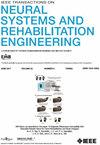Throw and Catch: Analyzing the Synchronized Movements of Eyes and Joints in Children
IF 4.8
2区 医学
Q2 ENGINEERING, BIOMEDICAL
IEEE Transactions on Neural Systems and Rehabilitation Engineering
Pub Date : 2025-02-19
DOI:10.1109/TNSRE.2025.3543730
引用次数: 0
Abstract
Throw and catch are fundamental motor skills that are closely related to eye-hand coordination, reaction speed, and spatial awareness in children. Current research on throw and catch mainly focuses on the impact of attentional focus, anticipatory knowledge, and training on visuomotor control. Little work has been done on the synchronized movements of eyes and joints during the throw and catch. To understand how these synchronized movements contribute to the success rate of throwing and catching, we proposed a video-based framework named Synchronized Eye and Joint Analysis (SEJA). This framework locates, extracts, and analyzes the essential eye and joint movements from untrimmed first-person and third-person view videos. Using the proposed framework, throw and catch events in long untrimmed videos were successfully identified, and whether each catch was successful was accurately assessed. Additionally, detailed metrics related to predictive gaze behaviors and predictive hand movements for each catch event were obtained. On a dataset consisting of videos from 56 children aged 7 to 10, the proposed framework delivered an average precision (AP) ranging from 0.5 to 0.95 at 0.881 for task localization and achieved an accuracy of 0.985 in predicting whether a catch was successful. Our research indicated that children with higher catch success rates showed shorter delays in predicting the ball’s trajectory, smaller amplitudes of body movement, and more pronounced predictive saccades (rapid eye movements to anticipate the ball’s position). These findings are crucial for comprehending and improving the development of motor skills in children.投掷和接球:分析儿童眼睛和关节的同步运动。
投掷和接球是儿童的基本运动技能,与手眼协调、反应速度和空间意识密切相关。目前关于抛接球的研究主要集中在注意焦点、预期知识和训练对视觉运动控制的影响。在抛接球过程中,眼睛和关节的同步运动研究很少。为了理解这些同步运动是如何影响投掷和接球成功率的,我们提出了一个基于视频的框架,名为同步眼关节分析(SEJA)。这个框架定位,提取,并分析从未修剪的第一人称和第三人称观看视频的基本眼睛和关节运动。使用所提出的框架,成功地识别了长未修剪视频中的投掷和接球事件,并准确评估了每次接球是否成功。此外,还获得了与每次捕获事件的预测凝视行为和预测手部运动相关的详细指标。在由56名7至10岁儿童的视频组成的数据集上,所提出的框架在任务定位方面提供了0.5至0.95的平均精度(AP),为0.881,在预测捕获是否成功方面达到了0.985的精度。我们的研究表明,接球成功率高的孩子在预测球的轨迹时延迟更短,身体运动幅度更小,预测性扫视(预测球位置的快速眼球运动)更明显。这些发现对于理解和提高儿童运动技能的发展至关重要。
本文章由计算机程序翻译,如有差异,请以英文原文为准。
求助全文
约1分钟内获得全文
求助全文
来源期刊
CiteScore
8.60
自引率
8.20%
发文量
479
审稿时长
6-12 weeks
期刊介绍:
Rehabilitative and neural aspects of biomedical engineering, including functional electrical stimulation, acoustic dynamics, human performance measurement and analysis, nerve stimulation, electromyography, motor control and stimulation; and hardware and software applications for rehabilitation engineering and assistive devices.

 求助内容:
求助内容: 应助结果提醒方式:
应助结果提醒方式:


